|
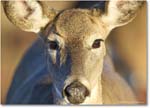 Let's face it, one of the charms of bird photography is the challenge of
getting close enough to capture a pleasing image. They're wild
creatures, tending to wariness when one gets too close -- and they can
fly. Which means quick escape is always available. After all, to a bird these strange upright creatures with
one gigantic protruding eye where a face should be must seem a dangerous
apparition -- suggesting, well, flight. If one wants to get the
image one must develop
a certain skill for approaching without alarming the critter. Let's face it, one of the charms of bird photography is the challenge of
getting close enough to capture a pleasing image. They're wild
creatures, tending to wariness when one gets too close -- and they can
fly. Which means quick escape is always available. After all, to a bird these strange upright creatures with
one gigantic protruding eye where a face should be must seem a dangerous
apparition -- suggesting, well, flight. If one wants to get the
image one must develop
a certain skill for approaching without alarming the critter.
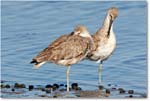 While I'm a bit too impatient to go in for camo
gear, hides and such, I still try to move slowly, always conscious of
the subject's reaction. Doesn't always work, but if practiced when
the bird is otherwise occupied it can pay dividends. Indeed, in
recent years I've sometimes been unable to keep the bird from falling
asleep in my presence. But lately, there's been an even more
interesting phenomenon. Beginning a few years ago, I had a piping
plover play peek-a-boo
for half an hour before flying in for a close look -- one of the most
memorable experiences in all my travels. While I'm a bit too impatient to go in for camo
gear, hides and such, I still try to move slowly, always conscious of
the subject's reaction. Doesn't always work, but if practiced when
the bird is otherwise occupied it can pay dividends. Indeed, in
recent years I've sometimes been unable to keep the bird from falling
asleep in my presence. But lately, there's been an even more
interesting phenomenon. Beginning a few years ago, I had a piping
plover play peek-a-boo
for half an hour before flying in for a close look -- one of the most
memorable experiences in all my travels.
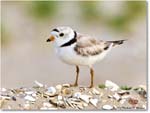 Although
there wasn't much going on at the refuge this June,
even less than last year,
nevertheless two new close encounters added to the success of the
visit. The first was a pair of nesting oystercatchers,
probably the same pair that nested behind the beach parking lot last
year. According to refuge staff, this pair makes a habit of
nesting on or near the beach -- and this year was no different. On the
last day, there was a roped off area where the female was sitting on
eggs. But the unusual close encounter took place a day before. Although
there wasn't much going on at the refuge this June,
even less than last year,
nevertheless two new close encounters added to the success of the
visit. The first was a pair of nesting oystercatchers,
probably the same pair that nested behind the beach parking lot last
year. According to refuge staff, this pair makes a habit of
nesting on or near the beach -- and this year was no different. On the
last day, there was a roped off area where the female was sitting on
eggs. But the unusual close encounter took place a day before.
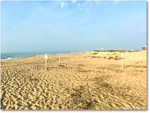 I was trying to photograph the pair on the beach -- and got more than I
bargained for. After pursuing these two for quite a while, suddenly
the smaller of the two, undoubtedly the female, walked toward me,
getting so close that her head and bill filled the entire frame.
Thankfully, she stayed just outside the minimum focusing distance of my
lens. The result was a succession of remarkably intimate images of
the lady looking me over. I was trying to photograph the pair on the beach -- and got more than I
bargained for. After pursuing these two for quite a while, suddenly
the smaller of the two, undoubtedly the female, walked toward me,
getting so close that her head and bill filled the entire frame.
Thankfully, she stayed just outside the minimum focusing distance of my
lens. The result was a succession of remarkably intimate images of
the lady looking me over.
 The
second incident involved a pair of mated killdeer. There's an
overwash area between the north beach parking lot and Swan Cove.
Filled with broken shells and scrubby vegetation, it is a barren flat
in which the killdeer pair forages for bugs and other fodder.
Beyond, there is a dense thicket of much taller vegetation bordering the
approach to Swan Cove. On the morning in question I parked and scanned
the area with binoculars, to no avail initially. The area is roped off
so one can only appoach to the barrier. The
second incident involved a pair of mated killdeer. There's an
overwash area between the north beach parking lot and Swan Cove.
Filled with broken shells and scrubby vegetation, it is a barren flat
in which the killdeer pair forages for bugs and other fodder.
Beyond, there is a dense thicket of much taller vegetation bordering the
approach to Swan Cove. On the morning in question I parked and scanned
the area with binoculars, to no avail initially. The area is roped off
so one can only appoach to the barrier.
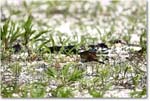 Then,
in the distance, up against that Swan Cove vegetation and far
outside the range of even my 600mm lens, I caught sight of a killdeer
searching for food. I stood watching and lamenting my bad luck
when suddenly the killdeer looked my way and took took to wing, flying
directly toward me. It landed perhaps twenty or thirty feet away
and stood watching. Remarkably, it remained in place while I
fetched my tripod mounted big lens. My luck soon got ever
better. The female joined the male, and right there in front of me
they -- well, they did what birds do in the story of the birds and the
bees. Afterwards the male stood watching me as if to say, did you
enjoy the show! Then,
in the distance, up against that Swan Cove vegetation and far
outside the range of even my 600mm lens, I caught sight of a killdeer
searching for food. I stood watching and lamenting my bad luck
when suddenly the killdeer looked my way and took took to wing, flying
directly toward me. It landed perhaps twenty or thirty feet away
and stood watching. Remarkably, it remained in place while I
fetched my tripod mounted big lens. My luck soon got ever
better. The female joined the male, and right there in front of me
they -- well, they did what birds do in the story of the birds and the
bees. Afterwards the male stood watching me as if to say, did you
enjoy the show! These new encounters with
curious birds made the trip a most memorable one -- proving once again the wildlife
photographer adage that when all else fails give patience a try. |

